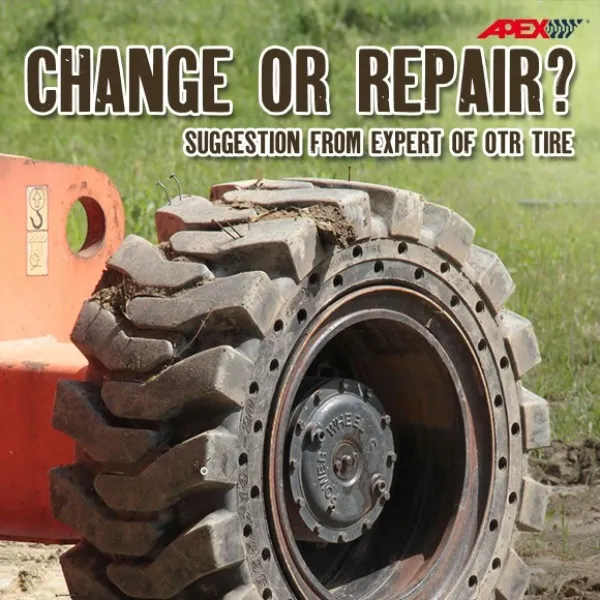CHANGE or REPAIR? Suggestion from Expert of OTR tire

When faced with a damaged OTR (off-the-road) tire, many operators find themselves pondering whether to change or repair it. This decision can impact not only immediate operational costs but also the long-term efficiency and safety of your machinery. As experts in OTR tires, we offer some guidance to help you make an informed choice.
Assess the Damage
The first step is to assess the extent of the damage. Minor punctures or cuts that do not penetrate deeply into the tire can often be repaired. Modern tire repair techniques and materials can restore a tire’s integrity effectively. However, if the damage affects the sidewall or involves large cuts, it may be safer to replace the tire entirely. A compromised sidewall can significantly weaken the tire, leading to potential blowouts under heavy loads.
Consider the Tire’s Age and Condition
Age is another crucial factor. OTR tires have a limited lifespan, often dictated by the type of work they perform and the conditions they face. If the tire is nearing the end of its expected life or shows signs of significant wear and tear, investing in a new tire might be more cost-effective in the long run. Continuous repairs on an old tire can add up, sometimes costing more than a replacement.
Evaluate the Operational Impact
Downtime is a critical consideration in industries relying on OTR tires. A repair can often be completed quickly and at a lower cost than a replacement, minimizing downtime. However, if the tire is prone to recurring issues, frequent repairs can disrupt operations and reduce overall productivity. In such cases, a replacement might offer a more reliable solution, ensuring your equipment operates smoothly.
Cost Analysis
Performing a cost analysis can also aid in your decision. While repairs are generally less expensive upfront, frequent repairs on the same tire can become a significant expense. Compare the cost of repairs with the price of a new tire, factoring in potential downtime and the long-term reliability of the repair.
Safety First
Above all, safety should be the primary consideration. If there is any doubt about the repaired tire’s ability to perform safely under operating conditions, opt for a replacement. A tire failure on-site can lead to accidents, injuries, and further damage to equipment, far outweighing the cost of a new tire.
Conclusion
In summary, whether to change or repair an OTR tire depends on the damage extent, tire age, operational impact, cost considerations, and, most importantly, safety. By thoroughly evaluating these factors, you can make a decision that ensures the efficiency and safety of your operations. As experts in OTR tires, we are here to provide the support and guidance needed to keep your machinery running smoothly. Contact APEXWAY now!
6 Signs You Should Replace Your Tires





